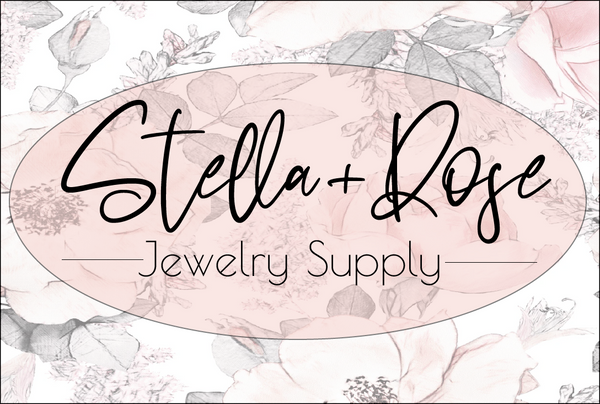Let’s be real for a sec, when your jewelry starts looking dull, weird, or patchy, it’s a total buzzkill. You spent good money on something shiny and golden, and now you’re wondering, “Is it ruined?” The answer depends on what you’re dealing with, tarnish or plating wear. While both can change how your jewelry looks, they’re not the same thing, and they’ve got very different fixes.
In this guide, we’ll break it down in plain terms. You’ll learn what tarnish is, how to spot damage on different types of metal, and how to take care of gold filled and sterling silver jewelry so it stays looking nice. If you're in permanent jewelry, we’ll also explain why material choice is a big deal, not just for you but for the people wearing it too.
What Is Tarnish?
Tarnish is a natural chemical reaction, and it just kinda happens over time. When gold filled or sterling silver jewelry starts to darken or look dull, that’s usually tarnish, it’s not necessarily ruined. It’s caused by air, water, oils from your skin, or even soaps and lotions.
But here's the good news, tarnish is reversible. A light polish or a mild cleaner soak usually brings it right back to life. It’s kinda like when your car gets dirty. You don’t need a new one, it just needs a good wash.

What Does Real Damage Look Like?
With gold filled and sterling silver jewelry, you don’t really deal with “flaking” like you would with plated pieces, but that doesn’t mean all dullness is just tarnish. Sometimes the base metal starts to show through, especially on cheap or misrepresented jewelry (like when someone says something’s gold filled and it’s not).
If your piece starts to show peeling or layers flaking off, especially around chain links or edges, it’s a sign you may not be working with real gold filled or sterling silver. That’s more like a fake flake situation.
Gold Filled vs Sterling Silver
Let’s talk about these two metals for a sec. Both are excellent for permanent jewelry, but they’re different beasts.
Gold Filled Jewelry
Gold filled is made by bonding a thick layer of real gold to a brass base. By law in the U.S., the gold must make up at least 5% of the item’s total weight. It’s hundreds of times thicker than plating, so it doesn’t peel or flake. Yes, it can tarnish, but again, that’s surface-level and fixable.
Sterling Silver
Sterling silver is strong and beautiful, but tarnishes faster than gold filled does. That’s because of the copper in it, which reacts with moisture and air. But just like gold filled, tarnish is not permanent. A polish cloth or a silver cleaner can get it shining again fast.
If it’s turning black or green, don’t panic, it’s reacting, not bad quality.
Why This Matters for Permanent Jewelry
Permanent jewelry is everywhere right now, those dainty little bracelets and anklets that get welded on? Yeah, those. And when something’s meant to be worn 24/7, material choice becomes a big deal.
We’ve seen it a bunch of times. People are disappointed when their bracelet’s turning dark, or their skin is reacting weird. The most common reason? Cheap material.
If you’re using actual gold filled or sterling silver, you’ll run into tarnish, sure, but it’s not the end of the world. It’s easy to clean. But if the chain was mislabeled or not made well to begin with, you could be facing damage that you can't fix. And that’s when people start asking for refunds or leaving bad reviews.
How to Care for Gold-Filled Jewelry

Gold filled is tough, but not invincible. Here’s how to make sure it lasts:
-
Rinse after swimming. Pool and hot tub water won’t ruin your jewelry, but you’ll want to give it a quick clean afterward to prevent buildup.
-
Avoid harsh chemicals. Bleach, strong cleaners, and similar products can damage the surface.
-
Be mindful with lotion. It can build up and dull the shine if left on the metal.
-
Polish often. A light rub with a soft cloth helps keep the shine.
-
Wash now and then. Warm water, a little dish soap, and a soft toothbrush—done.
-
Dry it completely. Moisture left behind can encourage tarnish.
How to Care for Sterling Silver
Sterling silver needs a bit more babysitting. It tarnishes faster, but it also bounces back easier.
Here’s how to handle it:
-
Use a polishing cloth regularly. Don’t wait till it’s totally dark.
-
Keep it dry. You can’t keep it completely dry all the time but do your best.
-
(Bonus). Your skin’s natural oils actually help slow tarnish and gently polish sterling silver over time.
What If You Have a Bad Piece?
Sometimes, you think you’ve bought a gold filled or sterling piece, but then it starts acting more like plated. If the metal peels or chips, you probably got sold something that wasn’t what it claimed to be.
Flaking isn’t something that happens with real gold filled or sterling. So if you see it, consider checking the source or asking for a refund.
Final Thoughts: It’s All About What’s Under the Surface
Tarnish is surface-level. It’s totally fixable. But flaking, or misrepresented metals, that’s where things go wrong.
If you’re in the permanent jewelry game, or you just like jewelry that lasts, gold filled and sterling silver are the materials that deliver. They last longer, look better, and clean up beautifully when they start to look tired.
At Stella Rose Jewelry Supply, we believe in materials that can go the distance. Our chains, charms, and components are carefully selected for long-term wear. And if you want your clients to get the most out of their permanent jewelry? We’ve also got brushes and cleaners made with jewelers in mind.
Because good jewelry deserves a good second life, even after a little tarnish.
